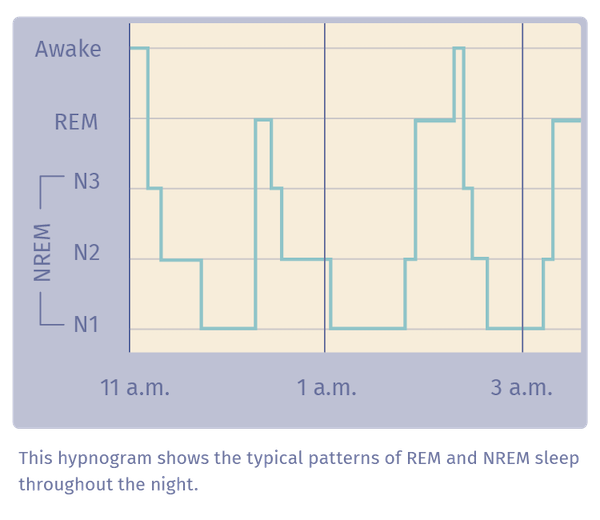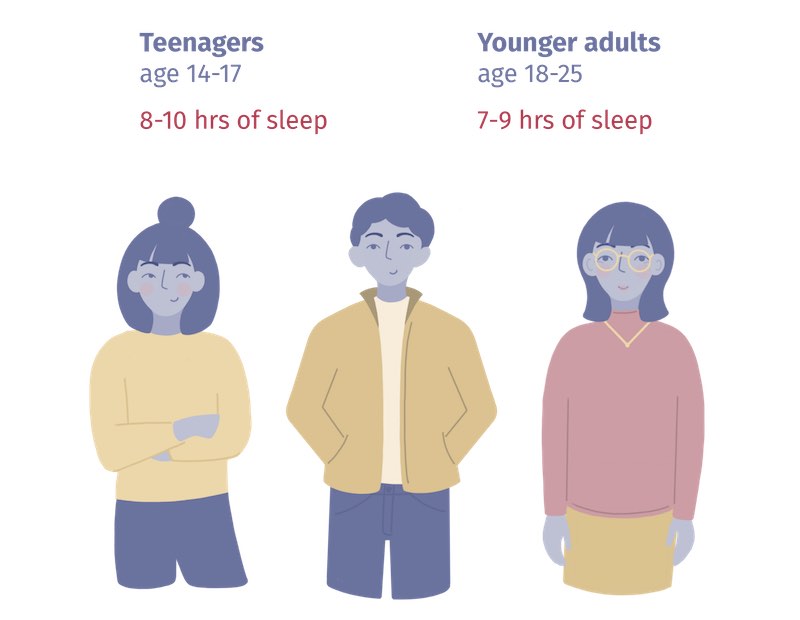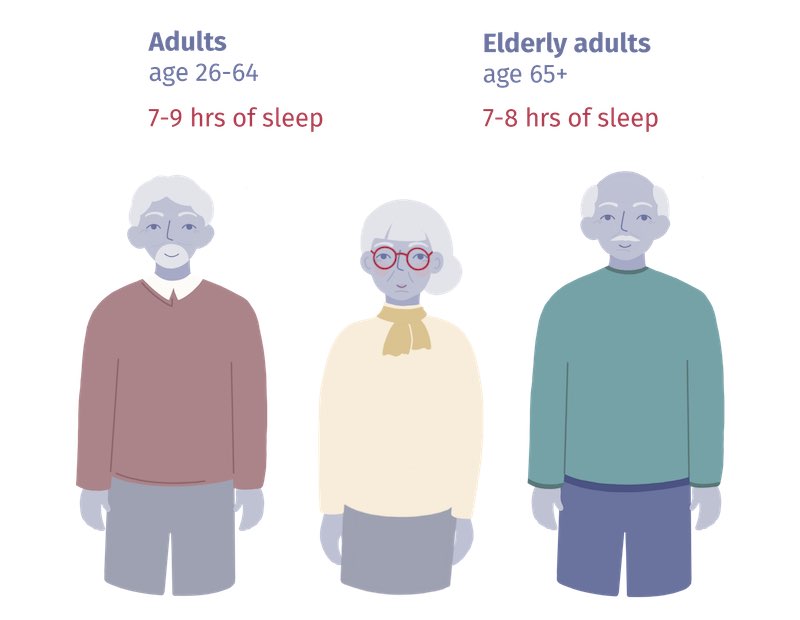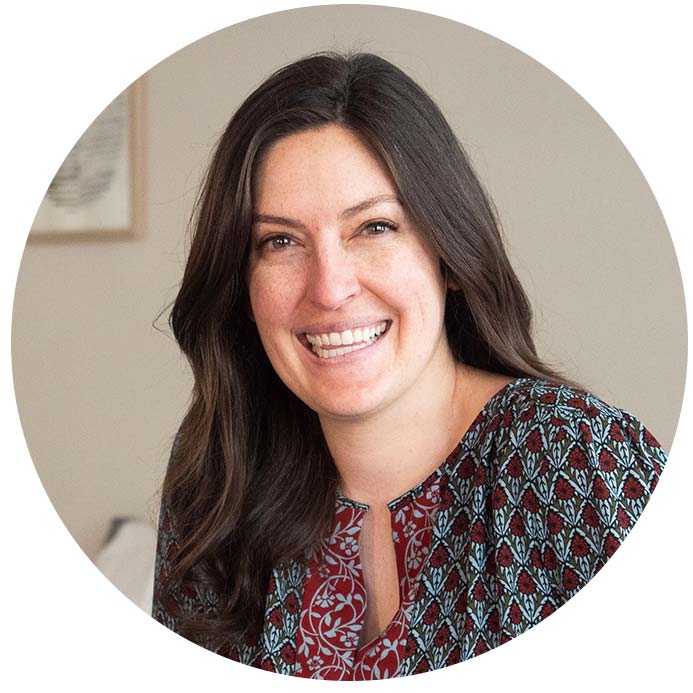Going to bed each night might be the most relaxing part of the day. But while someone sleeps, their body and brain continue to work hard — the brain isn’t “switched off” by any means. When someone is asleep, they move through different stages of sleep to complete a full sleep cycle, which lasts around 90 minutes. When one cycle ends, the process repeats all over again and keeps going until their alarm goes off or they wake up naturally.
Knowing how sleep cycles work can help people understand how much sleep they need, and why they sometimes wake up feeling awful and other times awaken naturally feeling refreshed, energized, and ready to face the day. Here’s the lowdown on our body’s sleep cycles.
Sleep Cycles: Complete Breakdown
Sleep is split into two main categories:
- Rapid Eye Movement (REM) sleep, and
- non-Rapid Eye Movement (NREM) sleep
Typically, people experience several stages of NREM sleep before a final stage of REM sleep. After a period of REM sleep, we move back into lighter sleep stages to start another fresh sleep cycle.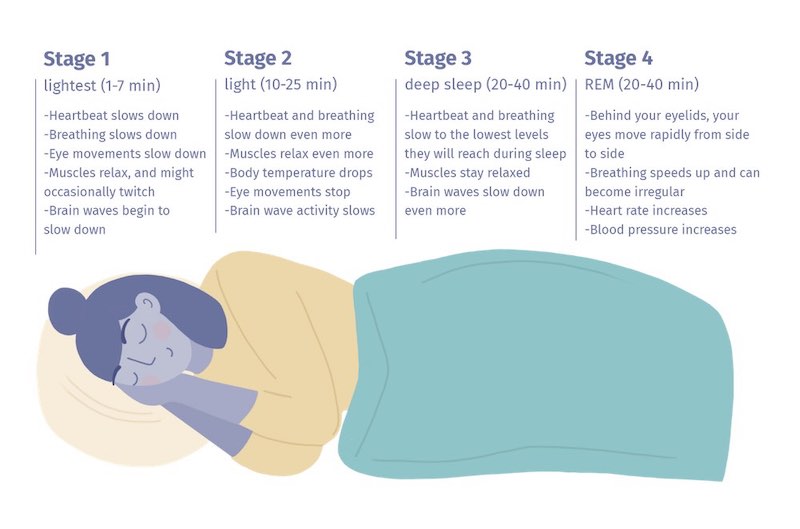
Stage One Sleep
Stage one is the first, very lightest stage of sleep, lasting about 1 to 7 minutes. According to the National Institute of Neurological Disorders and Stroke, stage one represents the changeover from wakefulness to sleep (which is why it lasts just a few minutes). During stage one sleep:
- Heartbeat slows down
- Breathing slows down
- Eye movements slow down
- Muscles relax and might occasionally twitch
- Brain waves begin to slow down
How Stage One Sleep Feels
According to Harvard Health Publishing, it’s usually easy to wake someone from stage one sleep, but not everyone will experience waking up from stage one in the same way: “If awakened, one person might recall being drowsy, while another might describe having been asleep.”
Stage Two Sleep
Stage two sleep is a light stage of sleep lasting 10 to 25 minutes. During stage two sleep:
- Heartbeat and breathing slow down even more
- Muscles relax even more
- Body temperature drops
- Eye movements stop
- Brainwave activity slows. The National Institute of Neurological Disorders and Stroke says brainwave patterns are “marked by brief bursts of electrical activity”
How Stage Two Sleep Feels
It’s not as easy to wake someone from stage two sleep as it is from stage one sleep. However, stage two sleep is still a fairly light stage of sleep. People won’t feel disoriented if they wake up from stage two sleep.
Stage Three Sleep
Stage three is often called deep sleep or slow-wave sleep and lasts 20 to 40 minutes. According to WebMD, during slow-wave sleep, the body “repairs and regrows tissues, builds bone and muscle, and strengthens the immune system.” This is why this stage of sleep is especially important for athletes. During stage three sleep:
- Heartbeat and breathing slow to the lowest levels they will reach during sleep
- Muscles stay relaxed
- It might be difficult to wake up
- Brain waves slow down even more
How Stage Three Sleep Feels
Stage three sleep is very deep and hard to wake someone up from — people may not notice loud noises, bright lights, or other things that might easily wake them from a lighter sleep.
“As NREM sleep progresses, the brain becomes less responsive to external stimuli, and it becomes increasingly difficult to awaken an individual from sleep,” Harvard Health Publishing explains. If someone is woken from stage three sleep, they will probably feel groggy and disoriented.
Rapid Eye Movement (REM) Sleep
REM sleep, or Rapid Eye Movement sleep, is a very “active” stage. What’s happening during REM sleep:
- Behind the eyelids, the eyes move rapidly from side to side
- Breathing speeds up and can become irregular
- Heart rate increases
- Blood pressure increases
- The majority of vivid dreaming occurs in this state
- Arms and leg muscles become temporarily paralyzed. The National Institute of Neurological Disorders and Stroke explains that this “prevents you from acting out your dreams”
According to Medical News Today, people experience REM sleep several times every night, and REM sleep accounts for “approximately 20 to 25 percent of an adult’s sleep cycle.” REM stages will probably get longer as the night goes on. And the NIH explains that “REM is thought to be involved in the process of storing memories, learning, and balancing your mood, although the exact mechanisms are not well understood.”
What Controls the Sleep Cycle?
At the most basic level, our sleep cycles are controlled by the circadian rhythm, also known as the internal body clock. Our circadian rhythm that helps us fall asleep at night and stay awake during the day is informed by exposure to light, hence why we sleep when it’s dark, and is related to the production of the hormone melatonin.
Additional research suggests a more complex explanation. A new study has found a certain set of nerve cells may be responsible for turning the brain “on” and “off,” thereby promoting sleep.
The findings suggest this particular set of nerve cells (dubbed GAL neurons) is essential for maintaining normal sleep cycles. What’s more, GAL neurons may at least partially explain the relationship between sleep and body temperature.
We spoke with study co-author and Assistant Professor of Neurology in the Beth Israel Deaconess Medical Center at Harvard Medical School, Dr. Vetrivelan Ramalingam, to better understand these findings.
“Our data not only shows that GAL neurons… promote sleep, but also that the quality of sleep induced by activation of GAL neurons depends on the environmental/body temperature, reinforcing the connection between sleep and temperature,” Dr. Ramalingam says.
According to Dr. Ramalingam, these findings provide valuable insights into the body’s natural sleep processes and may pave the way for more effective insomnia treatments. The researchers concluded that sleep is more likely to occur when these nerve cells are active, and that sleep is less likely when these nerve cells are inhibited. Consequently, the researchers speculate that damage to these neurons might contribute to insomnia.
When Do People Dream?
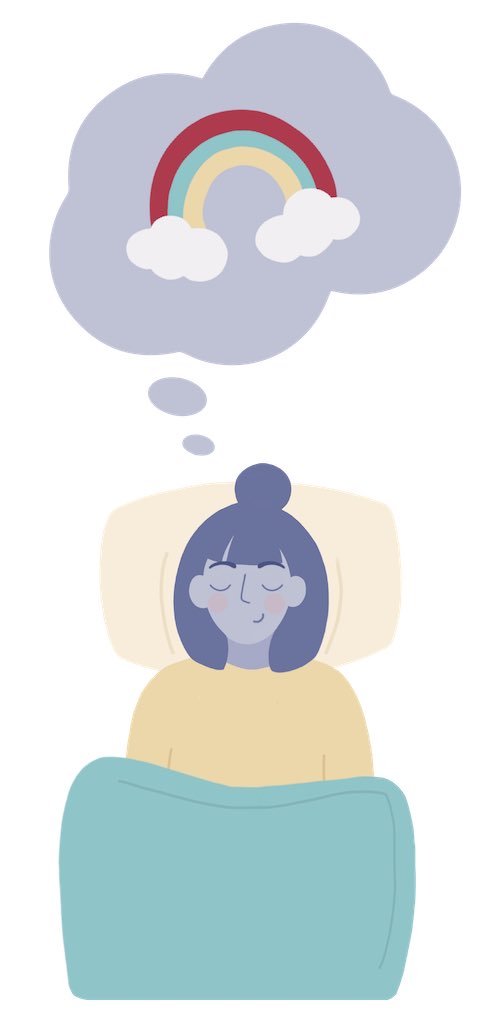 Dreaming can actually occur during any stage of sleep. However, according to WebMD, the most vivid dreams occur during REM sleep. WebMD estimates that we each dream between four and six times per night, although we may not always remember these dreams.
Dreaming can actually occur during any stage of sleep. However, according to WebMD, the most vivid dreams occur during REM sleep. WebMD estimates that we each dream between four and six times per night, although we may not always remember these dreams.
A USC sleep website explains: “It seems likely that all of us forget 95-99 percent of our dreams for the very ordinary reason that we sleep right through them and aren’t paying attention to remembering anything.”
There are different types of common dreams, including normal dreaming, nightmares, anxiety dreams, and “false awakenings” — where someone dreams that they have woken up and started their day, but they are still asleep.
Scientists still don’t know exactly why we dream or why we remember some dreams and forget others. However, research suggests that sleep brain wave patterns can predict whether or not we will remember a dream.
For one 2011 study, an Italian research team monitored 65 students’ brain waves while they slept (1). They woke the students from either stage two sleep or REM sleep and asked them to fill out a sleep and dream diary.
The researchers found that successful dream recall — meaning students remembered the contents of their dreams — was linked to a certain type of brain wave activity in the five minutes before waking up (specifically, theta brain waves in the frontal regions of the brain).
“These findings suggest that the neurophysiological mechanisms that we employ while dreaming (and recalling dreams) are the same as when we construct and retrieve memories while we are awake,” Scientific American explained.
What a Typical Night of Sleep Looks Like
How Naps Play a Role In Our Sleep Cycles
There’s a reason why experts recommend keeping daytime naps brief whenever possible. If a nap is long enough to take someone into a deep stage of sleep, such as stage three sleep, they’ll be harder to wake and groggy once they’re up from their nap. Plus, obtaining deep sleep during the day can make it harder for them to fall asleep again at night.
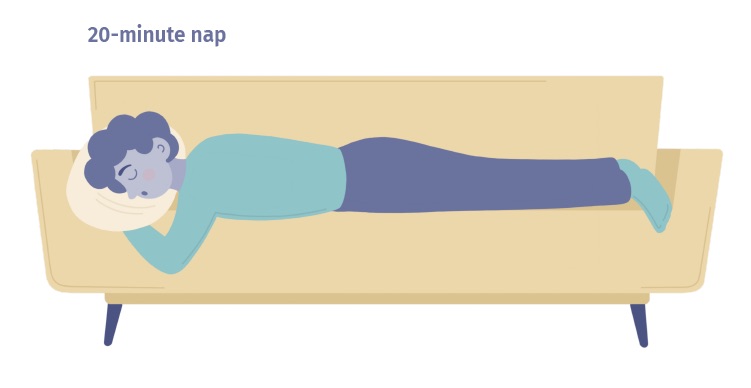
According to Sleep.org, people only need a 20-minute nap to reap benefits such as increased alertness and an improved mood. Sleeping for 20 minutes will likely only take someone into stage two sleep, so it will be easy for them to wake up and get back to their day. If they sleep longer, taking them into slow-wave sleep, it will be difficult to wake up and they may awaken feeling disoriented, foggy, and bad-tempered.
However, if someone does want to take a longer nap, sleeping for 90 minutes can take them through a full sleep cycle — including REM sleep. If they have completed a full sleep cycle, they should wake up feeling energized instead of groggy and inert.
How Our Sleep Cycles Change During Our Lifespan
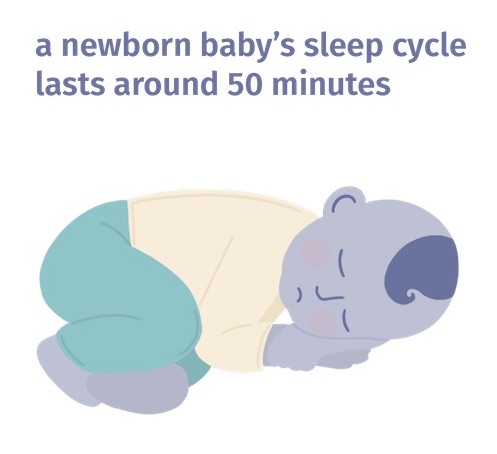 Just as the amount of sleep someone needs changes depending on their age, so does their sleep cycle.
Just as the amount of sleep someone needs changes depending on their age, so does their sleep cycle.
Newborns, who typically sleep up to 18 hours a day, split their sleep time pretty evenly between REM and non-REM sleep, according to HealthyChildren.org, a website run by the American Academy of Pediatrics.
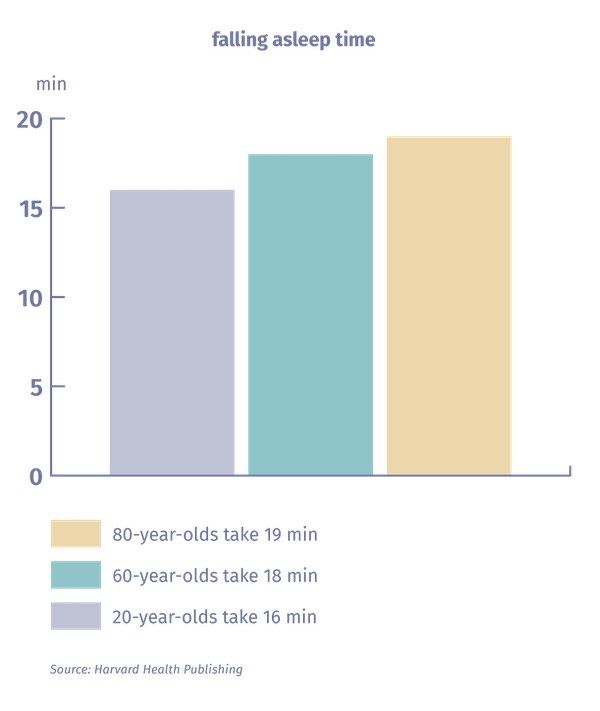 Harvard Health Publishing says it takes people longer to fall asleep as they get older. The website cites a 2004 study on sleep, which found that 20-year-olds will take 16 minutes to fall asleep and sleep for 7.5 hours; 60-year-olds take 18 minutes to fall asleep and sleep for 6.2 hours; and 80-year-olds take 19 minutes to fall asleep and will sleep for 5.8 hours (2).
Harvard Health Publishing says it takes people longer to fall asleep as they get older. The website cites a 2004 study on sleep, which found that 20-year-olds will take 16 minutes to fall asleep and sleep for 7.5 hours; 60-year-olds take 18 minutes to fall asleep and sleep for 6.2 hours; and 80-year-olds take 19 minutes to fall asleep and will sleep for 5.8 hours (2).
What’s more, 20-year-olds spend 20 percent of their sleep time in slow-wave sleep, 60-year-olds spend 10 percent, and 80-year-olds spend just 7.5 percent of their sleep time in slow-wave sleep.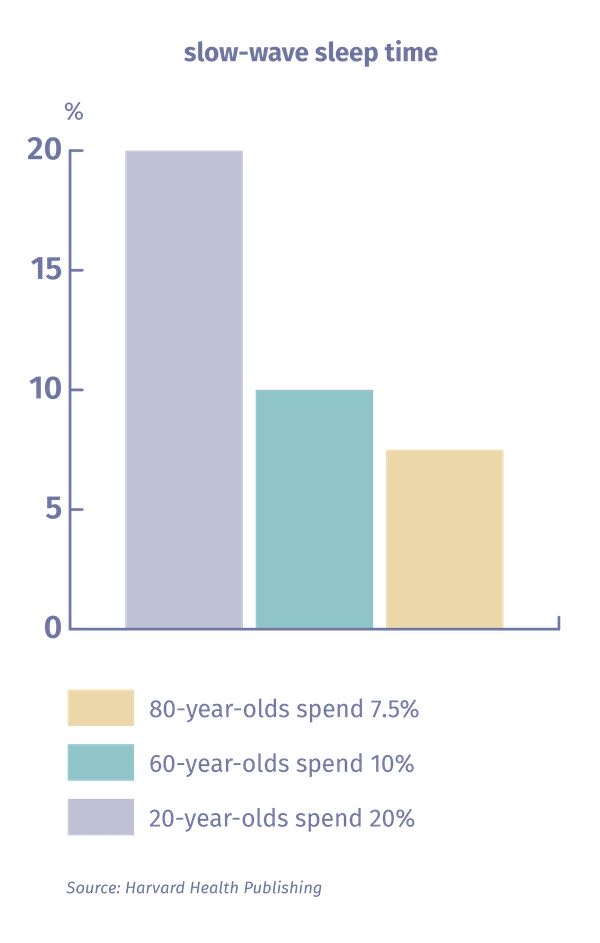
According to the Cleveland Clinic, as we get older we spend more time in light sleep, and also experience more sleep disruptions throughout the night.
“In general, older people sleep less, have more fragmented sleep, and spend less time in stage 3 (deep sleep), and rapid eye movement (REM) sleep, than younger people,” the Cleveland Clinic website explains.
This poses a bit of a conundrum: Seniors generally spend less time sleeping than younger adults, even though elderly people need around the same amount of sleep (at least 7 hours per night).
RELATED: Best Mattress For Seniors
Sleep Cycle Health Issues and Diseases
There are a number of health issues linked to disrupted sleep cycles.
The sleep/wake cycle is guided by one’s “internal clock,” which is in one’s brain. WebMD explains it like this: “This clock is a small part of the brain called the suprachiasmatic nucleus of the hypothalamus. It sits just above the nerves leaving the back of our eyes. Light and exercise ‘reset’ the clock and can move it forward or backward. Abnormalities related to this clock are called circadian rhythm disorders.” Here are a few sleep cycle health issues people should know about.
Non-24-Hour Sleep-Wake Disorder (Non-24), also known as Free Running Sleep Disorder (FRD)
Most people have a circadian rhythm (a natural body clock) that helps tell them when to wake up and when 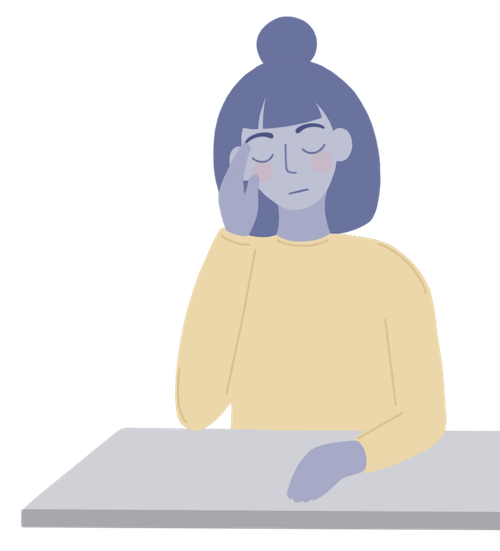 it’s time to rest. For most people, this body clock runs on a 24-hour cycle and is guided by environmental cues such as daylight and sunset.
it’s time to rest. For most people, this body clock runs on a 24-hour cycle and is guided by environmental cues such as daylight and sunset.
A lesser-known sleep disorder, known as Non-24 Hour Sleep Wake Disorder or Free Running Sleep Disorder, is a “circadian rhythm sleep disorder in which an individual’s biological clock fails to synchronize to a 24-hour day,” according to the National Organization for Rare Disorders. “Instead of sleeping at roughly the same time every day, someone with N24 will typically find their sleep time gradually delaying by minutes to hours every day.”
Non-24 is most common in people who are fully blind because total blindness means their brains cannot process environmental light cues that help tell them when to sleep and wake. WebMD says there is no singular treatment for the disorder, but that “hormones, medicine, and light therapy can help get you closer to a normal sleeping pattern.”
RELATED: Learn more about Free Running Sleep Disorder
Delayed Sleep Phase Syndrome (DSPS) or Delayed Sleep Phase Disorder (DSPD)
Someone with Delayed Sleep Phase Syndrome has a circadian rhythm that doesn’t line up with the typical biological clocks of most people. The Cleveland Clinic defines the disorder as when “a person’s sleep is delayed by two or more hours beyond the socially acceptable or conventional bedtime,” making it difficult for them to wake up on time in the morning.
People with Delayed Sleep Phase Syndrome may struggle to wake up on time for a typical 9-to-5 job, and adolescents with Delayed Sleep Phase Syndrome may be excessively sleepy at school during the day. Treatment can be tricky because people with DSPS can often sleep well and regularly if allowed to follow their own “natural” sleep rhythms rather than the schedule dictated by work or school. However, light therapy or melatonin can help people with Delayed Sleep Phase Syndrome who are not able to sleep on their own natural schedules.
Advanced Sleep Phase Syndrome
This is the opposite problem from what people with Delayed Sleep Phase Syndrome have. Someone with Advanced Sleep Phase Syndrome falls asleep too early and wakes up too early. For example, someone with Advanced Sleep Phase Syndrome may fall asleep at 5 p.m. and wake up at 1 a.m. (while someone with Delayed Sleep Phase Syndrome may fall asleep at 3 a.m. and wake up at 11 a.m.). Neither of these sleep schedules lines up with typical work or educational hours.
Shift Work Disorder
Shift work disorder is an issue affecting people who work non-typical hours, causing difficulty sleeping and excessive sleepiness.
“Shift workers and night workers often are tired and sleepy because of their work schedule,” says the U.S. Department of Health and Human Services. “Being overly tired makes it difficult to concentrate, which increases the possibility of errors or accidents. This can be a risk both to the worker and to the public. The stress of shift work also can aggravate health conditions, such as heart disease or digestive disorders.”
According to the Cleveland Clinic, an estimated 10 to 40 percent of shift workers will struggle with this issue, which can increase the likelihood of workplace accidents and cause irritability, trouble concentrating, impaired social functioning, and more.
RELATED: Sleep Tips For People Who Work At Night
Irregular Sleep-Wake Disorder (ISWD)
Most people go to bed at night, sleep for a period of several hours, and wake up in the morning. But individuals with Irregular Sleep-Wake Disorder will sleep during several different periods over 24 hours, typically for 1 to 4 hours each time. Overall, they get an adequate amount of sleep — it just happens during multiple, fragmented periods.
According to the Circadian Sleep Disorders Network, ISWD “is characterized by at least three sleep episodes per 24-hour period, irregularly from day to day.” Research suggests that ISWD is most common in adults suffering from Alzheimer’s disease, dementia, or traumatic brain injury. As with many circadian rhythm disorders, there is no singular treatment, but therapies and lifestyle changes may help.
What Happens When Sleep Cycles Are Irregular?
Some people may have irregular sleep cycles due to certain circumstances like traveling or working the night shift. When traveling to a different time zone, it’s common to experience what’s known as jet lag, when your internal body clock is disrupted because you enter a different time zone.
Night shift workers also have irregular sleep cycles due to working during the night hours and sleeping during the day. Irregular sleep cycles can be harmful to your overall health and well-being and can lead to more serious complications like chronic sleep deprivation and shift work sleep disorder.
A recent study in Scientific Reports suggests that going to bed and waking up at different times each day may increase the risk of cardiovascular and metabolic illnesses, including heart disease and type 2 diabetes. The study found that people with irregular sleep patterns tended to have higher blood sugar, higher blood pressure, and a higher projected risk of heart attack or stroke within the next decade compared to those with more regular sleep-wake cycles. Participants with irregular sleep cycles were also more likely to report stress and depression.
We spoke with the study’s lead author, Assistant Professor in Psychiatry and Behavioral Sciences at Duke University Jessica Lunsford-Avery, Ph.D., to learn more about the implications of this research.
“We have known for some time that individuals with extremely irregular sleep patterns — such as individuals engaged in rotating shift work — are at an elevated risk for heart and metabolic diseases,” Lunsford-Avery told Mattress Clarity via email. “What is novel about this study is that we used an extremely sensitive measure of sleep regularity — a minute-by-minute measure — so our findings suggest that even subtle changes in bed- and wake-times may have an impact on your health.”
Who Else Is At Risk?
It’s not only travelers and night shift workers who should worry about the effects of having an irregular sleep schedule. A new study in the journal Current Biology found that, in general, Americans’ sleep schedules are increasingly less likely to be synced with natural patterns of daylight and more likely to sync with lifestyle factors. The study looked at the relationship between Americans’ Twitter usage and “social jet lag.”
“Social jet lag is defined as the difference between when people sleep on free days (when their sleep is mostly set by their biological clock) and work days when they have to be awake at certain times because of their jobs and other obligations,” Michael Rust, Ph.D., study author and principal investigator at the University of Chicago’s Rust Lab, told Mattress Clarity via email. “You can think of it like you are spending the workweek in one time zone and then the weekends in another, which is why we think of it as jet lag.”
This is one of few studies to explore how social pressures — such as work and school schedules — might affect people’s sleep and activity patterns from one day or season to the next. Specifically, this study considered how social pressures might relate to circadian rhythms. The researchers concluded that, on the whole, Americans’ sleep habits appear to be increasingly decoupled from natural patterns of sunlight — which might pose a number of negative health consequences for personal and collective wellbeing.
What’s the Ideal Sleep Schedule?
Someone’s ideal sleep schedule will depend on when they need to wake up each morning and how much sleep they need in order to feel their best. It also depends on their age, and whether they are a night owl or a morning lark.
Morning larks are people who feel most productive and alert in the hours after they wake up in the morning. According to a study conducted by the genetic testing company 23andme, being a “morning person” might be genetic (3). Researchers asked 89,283 people if they were night owls or morning people, then analyzed their DNA, and found 15 genetic variants that were more common in morning people. Of the people they surveyed, 48.4 percent of women described themselves as morning people, compared to 39.7 percent of men. And adults over 60 were more likely to say they were morning people than adults under 30.
Night owls are people who feel productive and alert in the evening or at night time or people who tend to stay up late. In a study conducted on 433,268 adults aged 38 to 73, 9 percent of respondents described themselves as a “definite evening type.” Researchers found that definite evening types had an increased mortality rate — but they aren’t totally sure why. In a press release about the study, researcher Kristen Knutson speculated that night owls might get less exercise, get less sleep, experience high stress, or eat at the wrong time, all of which can contribute to health issues. “There are a whole variety of unhealthy behaviors related to being up late in the dark by yourself,” she said.
According to the Centers for Disease Control and Prevention:
- Teenagers ages 13 to 18 need 8 to 10 hours of sleep per night
- Younger adults ages 18 to 25 need 7 or more hours of sleep per night
- Adults ages 26 to 60 need 7 or more hours per night
- Elderly adults ages 61 to 64 need 7 to 9 hours of sleep per night
- Seniors 65+ need 7 to 8 hours of sleep per night
To determine the ideal sleep schedule, people should figure out what time they need to get up in the morning, and then count backward to figure out their ideal bedtime. For example, if someone’s alarm goes off at 7 a.m., committing to an 11 p.m. bedtime will hopefully get them plenty of sleep, even if it takes them a few minutes to fall asleep after going to bed. If they find themselves to be dozing off before their bedtime, or regularly lying awake for longer than 20 minutes, their bedtime is probably too late or too early and they should adjust it accordingly.
“Once you discover the optimal hours of sleep that work for you, keep them consistent during the weekdays and weekends, which will help keep your body’s internal clock on schedule,” Sleep.org advises.
People can also practice good sleep hygiene habits to help them stick with their sleep schedule. A few top tips:![]()
- Keep the bedroom cool, dark, and quiet
- Commit to a regular bedtime and wake-up time, even on weekends and holidays
- Avoid consuming caffeine during the late afternoon or evening
- Avoid looking at electronic screens (such as TVs, phones, tablets, and laptops) in the hour before bed
- Adopt a relaxing bedtime routine, for example: taking a hot bath, reading, meditating, or listening to music
- Avoid heavy or spicy food before bed
Can Sleep Trackers Tell People What Sleep Stage They’re In?
Many people use smart watches or sleep apps to track their sleep. These can be helpful for figuring out how much sleep one gets each night, but researchers stress that at-home monitoring is not accurate enough to diagnose sleep issues, and probably can’t reliably distinguish between the different stages of sleep. This can only be done through monitoring one’s brainwaves, while at-home sleep trackers rely on heart rate and movement.
“Heart rate is not the same as brain waves. And brain waves tell us what stage of sleep we’re in,” Dr. Lisa Meltzer, a sleep researcher at National Jewish Health hospital in Denver, told LiveScience.
If people are concerned that they have a sleep disorder, they should speak to their doctor to see if they recommend an overnight sleep study, during which professionals will use an EEG to monitor their brain waves. But if someone just wants to know generally how much sleep they are getting each night, a smartwatch or app should be able to give them some basic information.
Additional Resources Regarding Sleep Cycles
- To learn more about natural healthy sleep patterns, check out Harvard Health Publishing’s page on the topic.
- Harvard Healthy Sleep offers information on how to adopt healthy sleep habits.
- The Circadian Sleep Disorders Network has plenty of information about circadian rhythm disorders.
- WebMD has a guide to the different sleep stages.
The Final Word On Sleep Cycles
Developing a better understanding of one’s sleep cycles is essential for adopting a sleep-wake schedule that is optimal for the body. By ensuring that the body is able to obtain adequate rest each night, people will set themselves up for feeling good and being more productive in work and everyday life.
Featured image: NATNN/Shutterstock
References
- Marzano, Cristina, et al. “Recalling and Forgetting Dreams: Theta and Alpha Oscillations during Sleep Predict Subsequent Dream Recall.” Journal of Neuroscience, Society for Neuroscience, 4 May 2011, www.jneurosci.org/content/31/18/6674.
- https://www.ncbi.nlm.nih.gov/pubmed/15586779
- Hu, Youna, et al. “GWAS of 89,283 Individuals Identifies Genetic Variants Associated with Self-Reporting of Being a Morning Person.” Nature News, Nature Publishing Group, 2 Feb. 2016, www.nature.com/articles/ncomms10448.

